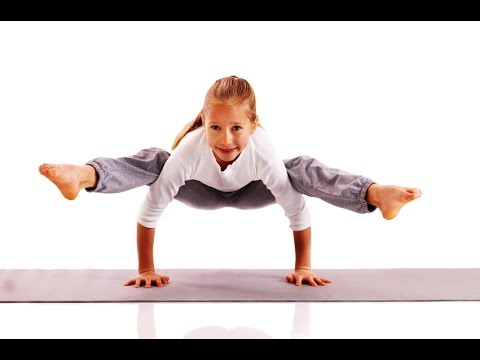Are you looking for a way to improve your physical and mental well-being? Look no further than one person yoga. This ancient practice has been around for centuries and offers a multitude of benefits for individuals of all ages and fitness levels. Whether you’re a beginner or an experienced yogi, incorporating one person yoga into your daily routine can help you achieve a greater sense of balance, flexibility, and inner peace. In this article, we’ll explore the various aspects of one person yoga and how it can positively impact your life.
1. What is One Person Yoga?
One person yoga, also known as solo yoga or self-practice, refers to the practice of yoga without the need for a partner or instructor. It involves performing yoga poses, breathing exercises, and meditation techniques on your own, allowing you to focus solely on your own body and mind.
This form of yoga provides a unique opportunity for self-reflection and self-discovery, as you become more attuned to your own needs and limitations.
Here’s a comparison between one person yoga (solo practice) and group yoga (many people):
| Aspect | One Person Yoga (Solo Practice) | Group Yoga (Many People) |
|---|---|---|
| Focus | Individual focus on personal practice, alignment, and progress. | Collective focus with group energy, shared experiences, and synchronized movements. |
| Customization | Tailored to individual needs, preferences, and abilities. | Generalized sequence with modifications based on collective levels and instructor’s guidance. |
| Attention | More personal attention and self-awareness. | Attention shared between participants and the instructor. |
| Instruction | Follows a self-guided routine or uses online/offline resources for guidance. | Instructor-led, providing cues and corrections to the entire group. |
| Challenge Level | Personalized challenge based on individual abilities and goals. | May cater to the average skill level of the group, potentially leaving some participants under- or over-challenged. |
| Feedback | Self-feedback and self-correction based on personal awareness. | Instructor provides feedback and corrections to individuals or the group. |
| Social Interaction | Limited social interaction during the practice. | Opportunity for social interaction, building a sense of community, and potential friendships. |
| Motivation | Self-motivated based on personal goals and dedication. | Collective motivation from the group’s energy and encouragement. |
| Accountability | Self-accountability for consistent practice and progress. | Group dynamics create a sense of accountability and commitment to attend classes regularly. |
| Practice Environment | Practiced in a personalized setting based on individual preferences. | Practiced in a communal setting like a yoga studio, park, or gym with others. |
| Variety of Poses/Sequences | Can choose and modify poses and sequences as per personal preferences. | Follows a predetermined sequence provided by the instructor. |
| Scheduling Flexibility | Complete flexibility to practice at any time, adjusting to personal schedule. | Adheres to the class schedule set by the yoga instructor or studio. |
Both one person yoga and group yoga have their unique benefits and serve different purposes. The choice between the two depends on individual preferences, goals, and the desired yoga experience.
2. Benefits of One Person Yoga
Engaging in one person yoga offers a wide range of benefits for both your physical and mental well-being. Here are some of the key advantages:
- Flexibility: One person yoga allows you to tailor your practice to your own flexibility level. You can modify poses and stretches to suit your body’s needs, gradually increasing your flexibility over time.
- Strength: By practicing one person yoga, you can build strength in your muscles, joints, and core. Holding poses and flowing through sequences helps to tone and sculpt your body.
- Stress Relief: One person yoga provides a sanctuary for relaxation and stress relief. The combination of deep breathing, gentle movements, and meditation helps to calm the mind and release tension from the body.
- Improved Focus: When practicing one person yoga, you have the opportunity to concentrate solely on your own practice. This enhances your ability to focus and be present in the moment, improving your overall mental clarity and concentration.
- Self-Expression: One person yoga allows you to express yourself freely through movement. You can explore different poses, sequences, and variations, creating a practice that is unique to you.
3. How to Get Started with One Person Yoga
If you’re new to one person yoga, getting started is easier than you might think. Follow these simple steps to begin your solo yoga journey:
- Find a quiet and comfortable space where you can practice without distractions.
- Gather any necessary props, such as a yoga mat, blocks, or straps.
- Start with a gentle warm-up to prepare your body for the practice ahead. This can include stretching, joint rotations, or a few rounds of sun salutations.
- Select a few poses or sequences that you feel comfortable with and focus on mastering them before moving on to more challenging ones.
- Listen to your body and honor its limitations. Avoid pushing yourself too hard and always prioritize safety and proper alignment.
- End your practice with a few minutes of relaxation or meditation to allow your body and mind to fully absorb the benefits of your practice.
4. FAQs on One Person Yoga
Q: Can I practice one person yoga if I’m a beginner?
A: Absolutely! One person yoga is suitable for individuals of all levels, including beginners. Start with simple poses and gradually progress as you become more comfortable and confident in your practice.
Q: Do I need any special equipment for one person yoga?
A: While you don’t necessarily need any special equipment, having a yoga mat and props like blocks or straps can enhance your practice and provide support when needed.
Q: How often should I practice one person yoga?
A: The frequency of your one person yoga practice depends on your personal preferences and schedule. Aim for at least three to four sessions per week to experience noticeable benefits.
Q: Can one person yoga help with weight loss?
A: While one person yoga primarily focuses on improving flexibility, strength, and mental well-being, it can indirectly support weight loss by promoting a healthier lifestyle and reducing stress levels.
5. Conclusion
Embarking on a one person yoga journey can be a transformative experience for both your mind and body. By practicing solo yoga, you have the freedom to explore your own potential, express yourself, and cultivate a deeper connection with yourself. So why not roll out your mat, take a deep breath, and begin your one person yoga practice today?
Fun Fact: Did you know that the word “yoga” comes from the Sanskrit word “yuj,” which means to unite or join? Through one person yoga, you can unite your mind, body, and spirit, creating a harmonious balance in your life.
Originally posted 2023-02-14 20:25:26.



